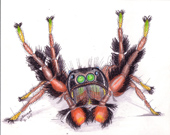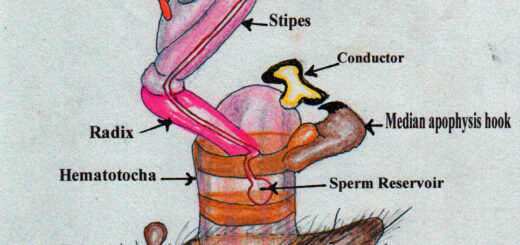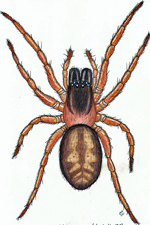SPIDERS, Part 5. Sexual Selection in Spiders.
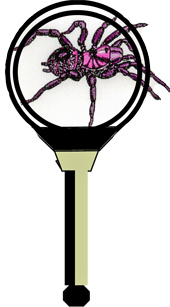
Recall, from Part 3. That the male will take a considerable risk when going a courting.
Darwin, in his book Origin of Species by Means of Natural Selection, or the Preservation of Favored Races in the Struggle for Life, suggested that Sexual Selection plays an important part in developing life forms.
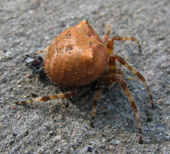
A Female Cat Spider
Having spent a fair quantity of time studying the cultivation of tarantulas and true spiders. I have concluded that sexual selection plays a major part in a species “natural selection”, at least in spiders.
We will give an example with the Cat Spider that you may be familiar with, for this spider often builds its orb-web across a lighted window. In this way, she receives a supply of moths every evening. She will be quite large, her abdomen full of eggs.
As you may know the females, the epigynum-plate lies between the anterior book lungs. This epigynum is not visible unless one examines the cast skin of a mature female spider. Better still, would be a dissection, along with clearing away of the tissue surrounding the organ. Hence these illustrations are a quick way to make my point. An illustration is worth a thousand words. . This Drawing is (After Wichle, 1967.)
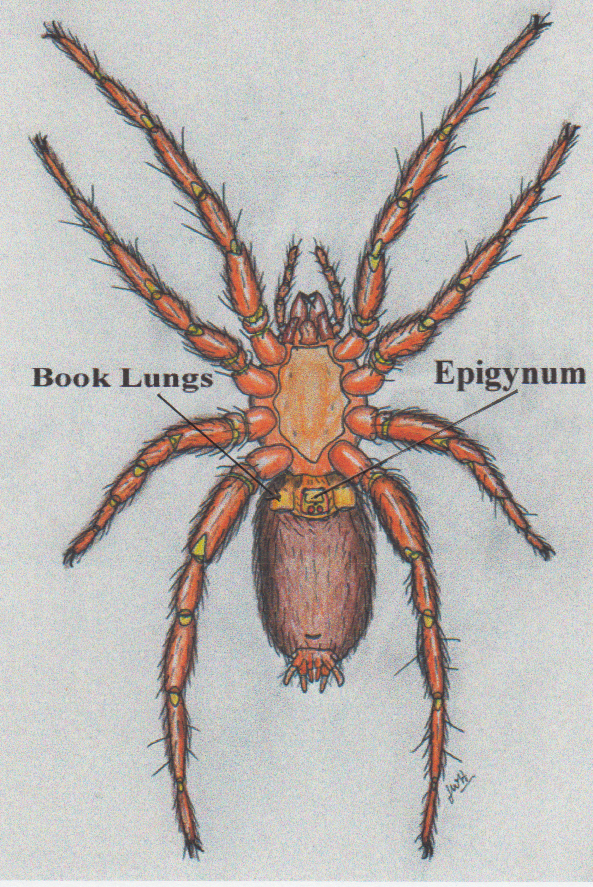
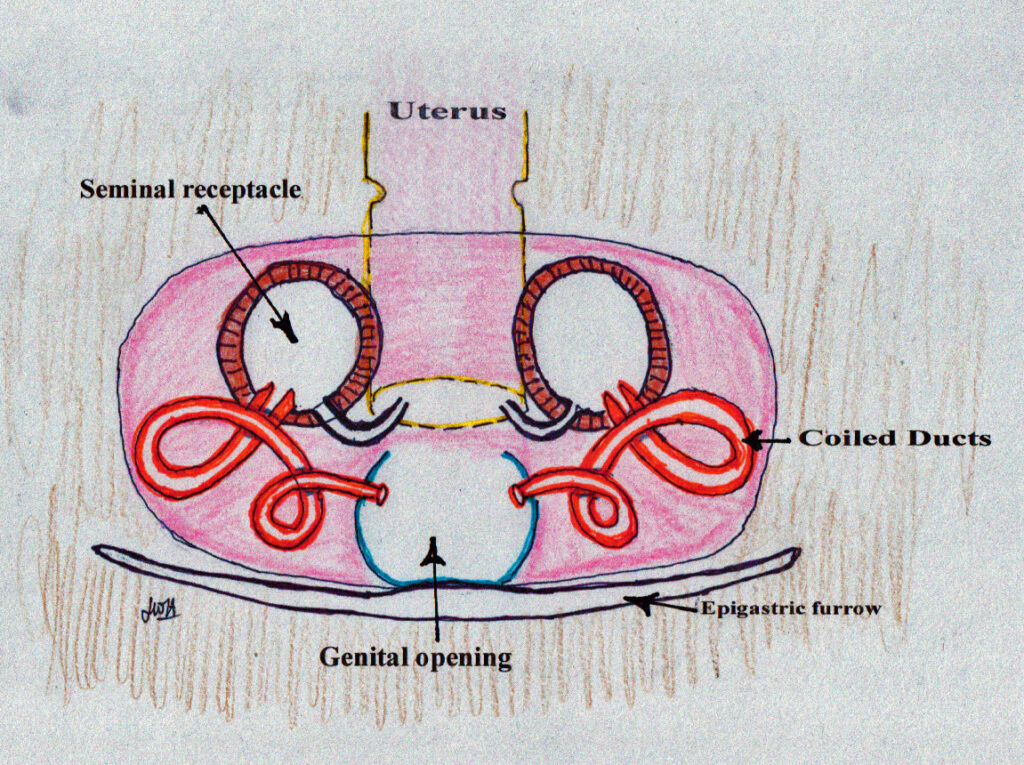
Yet the female “often as not” makes mating with a male exceedingly difficult. The path between the female sex aperture and the spermatheca where the sperm is stored; consists of a tube which the female has evolved into a series of long-consorted bends, making it a difficult journey to take. Only the fittest of males with an embolus adapted to achieve this maneuver. Diagram after Melchers, 1963.
The male sexual apparatus has to keep up with the female’s deliberate obstructions, thereby creating a “lock and key” system. During mating the male’s embolus is inserted through the external genital oping and then on into the sperm duct.both strucures must match.
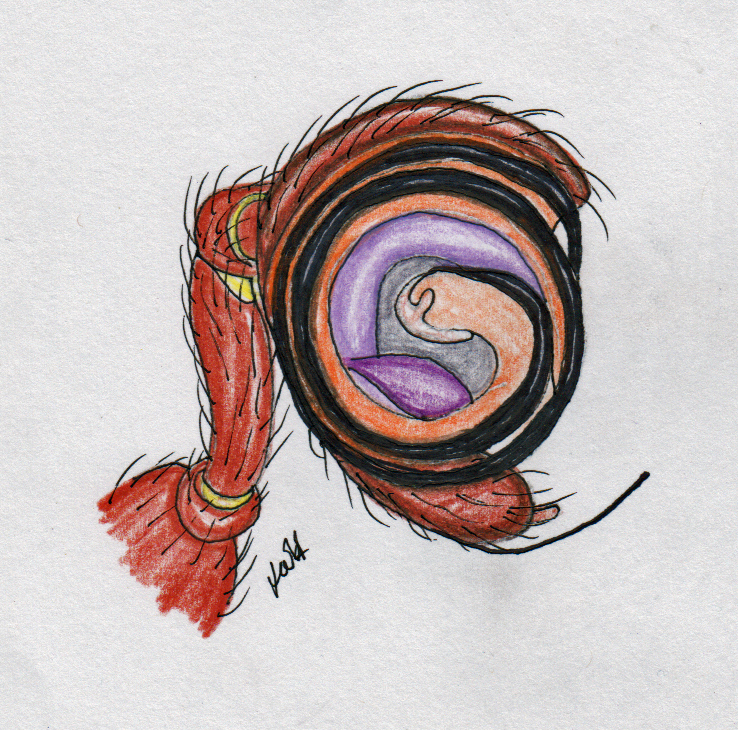

The male’s papal organ has also developed into a complex system of interlocking parts, in his efforts to deliver his gametes. Recall from part 2, that this complex organ, metamorphized from a simple palp.
The male’s papal organ has also developed into a complex system of interlocking parts, in his efforts to deliver his gametes. To be able to navigate the twisting bends leading to the females’ spermatheca. He needs an anchor point and be able to twist and turn the embolus to achieve the delivery. This drawing is (After Grasshoff, 1968.)

The male’s adaptations to his papal apparatus have become very complex.
The courting procedure of the female is hard enough, yet the male has a full toolkit enabling him to pass on his genes to the next generation. First, the hook of the median apophysis engages with the tip of the female’s scapus. The scapus, by the way, is a tube used for egg-laying, it also covers her sexual opening. The hook then turns to secure a tight hold of the scapus, the turning is driven by the inflation of the soft hematodochae, hydraulically. This expansion of the hematodochae provides the energy to shift the positions of the radix, and stipes, bringing the embolus into position. This inflation also causes a rotation of the tegulum, which in turn presses the conductor to one side of the scapus and the embolus into the epigynum. This drawing is (After Grasshoff, 1973.)

Conclusion.
The Female spider improves her reproduction success by selecting the most promising male. The male on the other hand needs to keep up with her demands.
As an end-note, recall that the male elaborates copulatory organ – the palp. Arose from the simple structure shown here, consists of just two internal muscles and one claw.
Enjoy, and keep reading.
JohnH.
